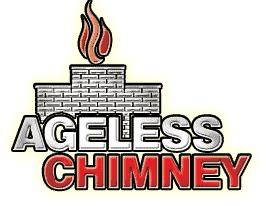Chimney Sweep in Alphabet City, NY
What our clients say




Read About Us
Browse Masonry & Brickwork
contact us
Signs You Need a Chimney Sweep for Your Home in Alphabet City, NY

Why Regular Chimney Sweeping is Important
Regular chimney sweeping is crucial for maintaining a safe and efficient fireplace. In Alphabet City, NY, homes with chimneys should be inspected and cleaned annually to ensure dangerous creosote buildup is removed, preventing potential fire hazards.
If you’re noticing a strong odor or excessive smoke, it might be time for a professional chimney sweep. Ageless Chimney can help identify and solve these issues promptly. Our expert team provides thorough inspections and cleaning services to keep your chimney in top condition, ensuring a safer and more efficient fireplace for your home. Trust Ageless Chimney for reliable chimney maintenance.
Experienced Professionals
Our team has years of experience and extensive training in chimney sweeping.
Comprehensive Services
We offer thorough inspections and cleanings, ensuring your chimney is safe and efficient.
Customer Satisfaction
Ageless Chimney is dedicated to providing excellent customer service and ensuring your home is safe.

Common Signs You Need a Chimney Sweep
Several signs indicate that your chimney needs a professional sweep. Firstly, if you notice a black, tar-like substance around your fireplace, this is creosote and needs to be removed immediately. Creosote buildup is highly flammable and can lead to dangerous chimney fires if not addressed. This substance forms from burning wood and can accumulate quickly, especially if you use your fireplace frequently.
Another sign that your chimney needs attention is if your fireplace starts to produce excessive smoke. This indicates a blockage or buildup that prevents proper ventilation. Smoke backdrafting into your home is not only unpleasant but also a health hazard, as it can contain harmful gasses like carbon monoxide. Ensuring that your chimney is clear and functioning correctly can prevent these issues and keep your indoor air quality safe.
In Alphabet City, NY, another common sign of needing a chimney sweep is a poor draft. If the smoke isn’t exiting properly, it can fill your home with dangerous gasses. Poor draft can be caused by obstructions such as animal nests, leaves, or soot buildup. Regular inspections by Ageless Chimney can help identify these problems early and maintain the efficiency of your fireplace.

Benefits of Choosing Ageless Chimney
Choosing Ageless Chimney for your chimney sweep needs ensures you receive expert service and peace of mind. Our professionals are trained to spot potential problems early and provide efficient solutions. We use state-of-the-art equipment and techniques to thoroughly clean and inspect your chimney, making sure it operates safely and efficiently. Homeowners in Alphabet City, NY can rely on our expertise for top-quality service.
Our team is committed to providing comprehensive services, including detailed inspections and thorough cleanings. We understand the unique needs of homes in New York City and tailor our services to meet those requirements. By choosing Ageless Chimney, you are investing in the safety and longevity of your chimney and fireplace. Regular maintenance from our skilled technicians can prevent costly repairs and ensure your fireplace remains a cozy, safe feature of your home.
Customer satisfaction is a top priority for Ageless Chimney. We strive to offer the best customer experience, from the moment you call us at 516-795-1313 to the completion of our service. Our friendly and professional team is dedicated to answering your questions, addressing your concerns, and ensuring that your home in Alphabet City, NY is safe and comfortable. Trust us to keep your chimney in excellent condition year-round.
